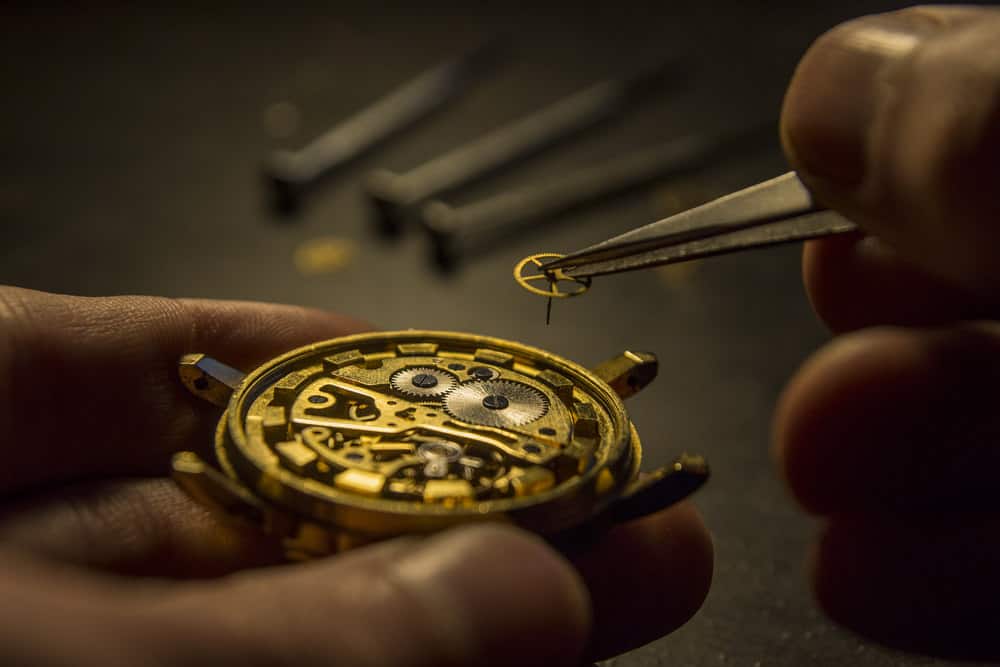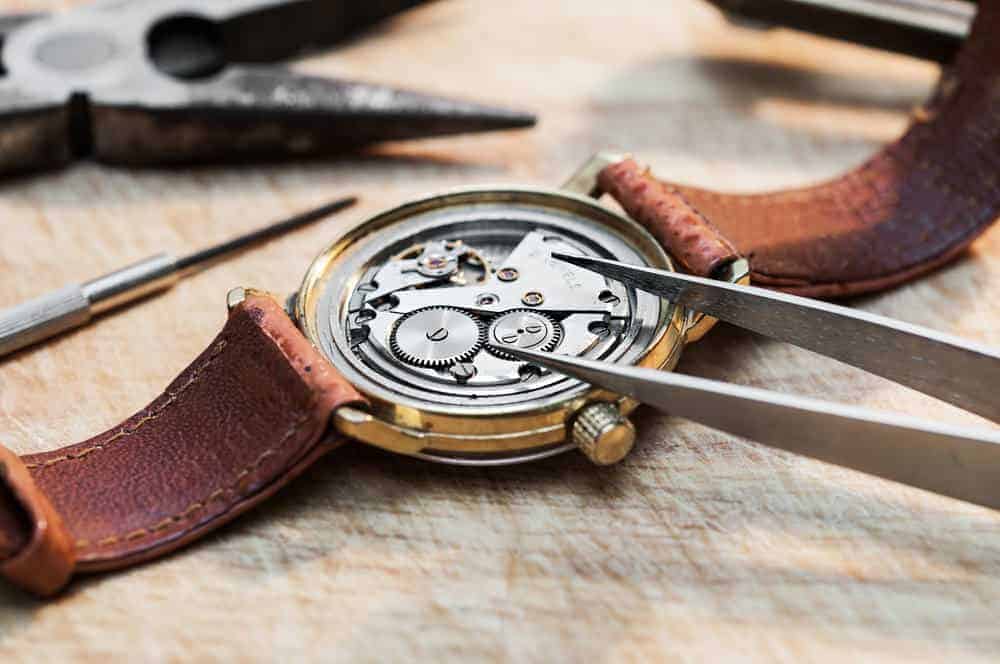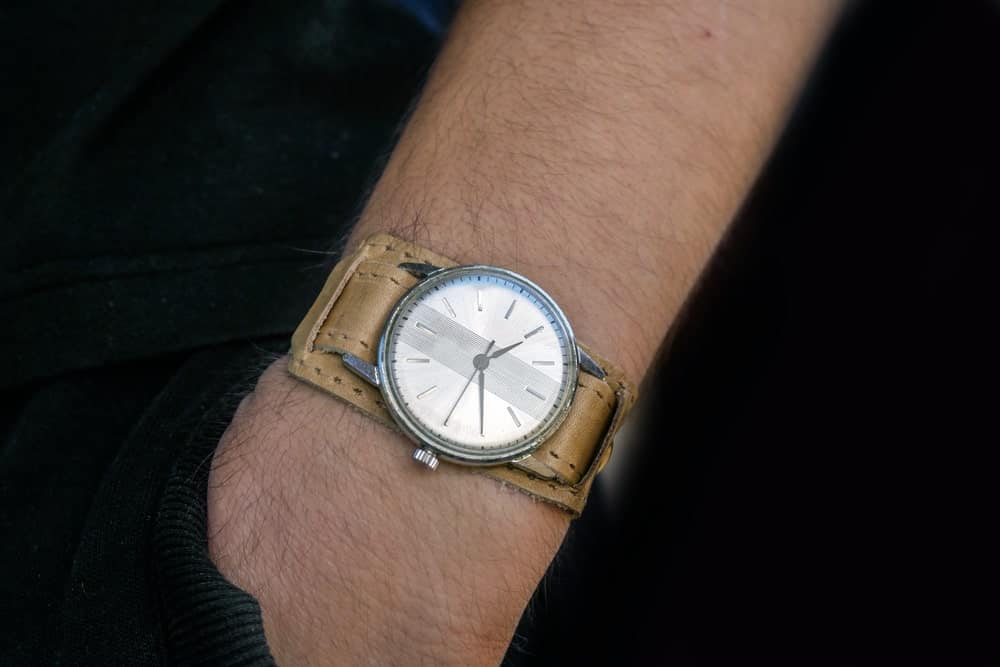Buying an antique watch? Lucky you. Before you go drop thousands of dollars, read these 18 things to know before buying antique watch. Good stuff here.
How’s this for irony on a smartwatch site. An article about buying an antique watch.
The thing is, I love all types of watches including antique watches and of course smartwatches. I’m a watch junky.
In fact, a well-functioning antique watch is so cool because it has a real history to it. Some are very old which is a real dichotomy with the explosive growth of smartwatches.
Despite my passion for smartwatches, there’s something special about adding an antique watch to your collection. Check out these antique watch buying tips.
1. Do Your Research
Before you step out and tumble down the rabbit hole of watch buying, it’s important to know where you’re headed and what you’re looking for. Getting familiar with the various brands, crafting techniques that are unique to each brand can make you a smarter, savvier shopper. You’ll be able to spot a deal, a fake, or just be able to pick a seller’s head during the buying process.
2. Join the Community
You are not the first to look for antique watches and you won’t be the last. On top of that, chances are there is an online community of fellow antique shoppers who have dealt with the ups and downs of antique shopping. You can learn from their past mistakes as well as be pointed in a direction that you may not have known about. Having someone put things in “regular” terms for you can take some of the anxiety out of making a purchase that you may or may not be completely sure on.
3. From the Horse’s Mouth
Did you know that Rolex uses specific steel in their watches that NO ONE else uses? You know who does knows…Rolex. Contacting the manufacturer of whichever brand your on the hunt for can provide a wealth of information. There are archives that you may be able to request or access that can give you insight into a watch’s production year, caliber number, and other information.
4. Find a Watchmaker
If doing research, surfing the web, or contacting manufacturers is not your thing, find a watchmaker. The depths of knowledge watchmakers have is astounding. They can tell you about parts and where to find them, which watches are worth the trouble, where to find watches for purchase as well as point you towards colleagues that may have more knowledge of what you’re looking for. Finding a watchmaker can put you in touch with a “real-life person” that you can look in the eyes and ask your questions.
5. The Price is Right
Just like you wouldn’t purchase the first car you test drove, you’ll want to shop around for the antique watch you’re looking for. Price can vary from dealer to dealer for a variety of reasons. If you’ve got money to blow and can take an overcharge for hundreds of dollars, more power to you. If not, shop and compare both online and in brick and mortar stores.
6. Go For What You Know
Say you’re a Rolex guy or girl and you come across an antique watch that catches your eye. You’re not familiar with the brand, probably never heard of it, but the price is talking your language. You may be enticed to pull the trigger on the purchase, but stop and take a breath. What do you know about this watch…about the brand? What should you be looking for that authenticates this brand? Is this truly a good deal? What do these watches normally go for? If you can’t answer these questions, its best to probably stick with Rolex’s or start doing some research.
7. Check the Dial
Believe it or not, a watch dial can be the difference of a watch costing over a million dollars or 40 to 50 grand. When examining the dial of a watch, it’s important to know and understand the brand of watch you’re looking at. Each brand adds its own signature flare to their dials that make them distinct to that brand. Doing your research and/or sticking with a brand you know and love will help you to spot these differences. It will also help you to spot a possible fake or a watch that has been repaired with a new dial. Knowing this will help you negotiate a price that is conducive to the condition of the watch in question.
8. Illuminated lumes
Lume is a short term for the luminous phosphorescent glowing solution applied on watch dials. Depending on the color of that glow, you can determine if a watch was refinished or not. If the lume on the watch in question has a “mint green” glow to it, then it was probably refinished. Before and leading up to the 1960s, most radium or tritium did not age into a “mint green” color.
9. Let’s Move
If you’re fortunate to find a seller with photos of the watch’s movement, watch it closely. So what are you checking for? Check the color (brown, black, rusty), is it missing pieces (balance wheel, hairspring). If the answer to any of those questions is ‘yes’ then strongly consider moving on from this purchase. If this is the one you’ve been looking for, check and see what the road to restoring looks like. Some watches are SO vintage that the parts don’t exist anymore. Other ways to get parts you need are watchmakers, the actual makers of the watch, or another watch with similar movements that can be used for parts.
In order to get movement photos, the seller must remove the case back. In some cases, a seller may know how to do this themselves or they go to a jeweler. Removing the case back can backfire on someone, especially if they don’t know what they’re doing. You can damage the watch and even some of the parts.
Movement photos are an essential tool when antique watch shopping, but not totally necessary. If the seller doesn’t know how to remove the case back, and he/she isn’t near a jeweler that can do it, it’s probably wise to let it go and get as much info on the watch that you can. Better to make an educated guess, than damaging your future purchase.
10. Don’t Sweat the Small Stuff
I know that finding that diamond in the rough in great condition is the dream, but you’re antique watch shopping. A few imperfections on an original piece adds a sense of flavor to the piece. There’s nothing wrong with a refinished piece, in some cases it’s necessary. Don’t be turned off by a few dings, scratches, or blemishes. If the piece has all of its original parts, it might be worth considering.
11. Factor in ALL the Costs
When you buy an antique watch, there will be additional costs you incur after the purchase. This can come in the form of repairs and touch-ups about every 1 to 2 years. Do you know where you’re going to take the watch when that time comes? Hopefully, you’ve already started to become familiar with a watchmaker. If not, you NEED to do so. The watch may be a steal of a price, but what is the “down the road” coast for repairs that you most certainly will have to make eventually.
12. Exercise Caution
When buying anything online, it’s important to double, triple, and quadruple check any and all information a seller is essentially “selling” you. While finding a watch with the original box and papers is an amazing find, don’t forget that there are wolves out there who only want to swindle you. Never forget that papers can be forged and manufactured to be authentic. The same goes for the box. If it’s too good to be true, it probably is. Don’t be blinded by the big shiny deal. Keep your wits about you and begin to apply some of the knowledge you’ve been cramming into your head to make this purchase.
13. Verify Serial Numbers
The serial number on an antique watch will do more than just tell you how old the watch is. Investigating the serial number will allow you to find out everything about the watch. You’ll be able to find out how the watch was originally intended to look. Armed with this information you’ll be able to spot a “Frankenwatch” from a mile away.
A “Frankenwatch” is a watch that’s been pieced back together with a number of different parts from different sources. As stated earlier, this is a practice that is not frowned on as some watches need to be brought back to life. The problem comes when you are on the hunt for an “original” piece. Knowing the serial number will set you on the right path to finding information on the watch you’re potentially buying and how “original” it still is or isn’t.
Another helpful tip is understanding the difference between antique and vintage. Vintage watches are considered to be 25 years old. An antique watch is described as being 100 years old.
14. Verify the Seller
Never, ever be afraid to do your research on a seller and put them through the ringer. You don’t have to be rude or “extra” but definitely do your “do-diligence” to make sure they are on the up and up. Ask around about them, talk to them, and pick their brain, and test their knowledge. Don’t be afraid to go so far as to ask them to send you photos of the watch with something that can verify the current date. Get names and contact info. Go FULL SHERLOCK HOLMES on them if you have to. An antique watch can run upwards into the thousands of dollars. You’ve worked too hard for too long to accumulate this money and the last thing you want to do is give it to some swindler.
15. Costly Metal Doesn’t Always Equal Great Value
When antique watch shopping, scarcity and rarity are the two deciding factors in a watch’s value. A platinum or gold watch may look great, but if the said watch is from the ’80s, platinum was VERY popular. That means that the scarcity and rarity of the watch in question are not as valuable; even if it’s platinum or gold. A helpful tip when looking for a truly “valuable” antique watch, look for a watch made with discontinued materials like red coral or Burmese rubies.
16. Rust is a Non-Starter
Rust is kryptonite to watches. If the watch you’re looking to purchase shows ANY signs of rust, walk away. Rust indicates that there is probably much more extensive damage that you do not see, but WILL SEE sooner than later. Rusted watches are also almost impossible to repair properly. You’ll likely have to turn your antique watch into a “frankenwatch” if it has rust. Check for rust in these places:
- the hands – could mean that more rust can be found on the setting and winding parts underneath the dial
- movement
- stem or steel case parts
17. Open Your Ears
This is a technique best left for the “well-trained” ear, but that doesn’t mean you can’t start training YOUR ears. Hold the watch up to your ear. What do you hear? When a watch is working properly, you should hear a crisp, clear ticking sound with a slight metallic ring. Contrary to the typical “tick-tock” noise clocks make, you are looking more for a “ting-ting”. Any other noises such as scuffing or dragging, and double-knocking may hint at the overall operation of the watch is not up to par.
But wait…there’s more…
Let’s say the watch sounds great. Great! Now change the position of the watch and listen again. Does it sound the same as it did a few moments ago? Just as before, if you hear anything other than what was described earlier, something could be wrong with the watch.
18. Just Do It
Hopefully, you’ve enjoyed the read and gotten some good tips and valuable information. More than that, hopefully, you’ve got the confidence to go out there and get into the thick of it and use your instincts. Your time on Earth has granted you intuition and a good sense of judgment. Trust in that. If you get “weirdo” vibes from a seller, walk away. Trust, there is another seller out there that wants to do right by you and your hard-earned money. Have fun, trust your gut, and happy antiquing!
References:







